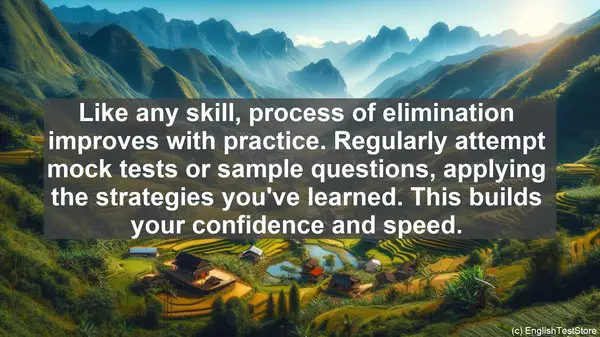Introduction: The Power of Process of Elimination
Welcome to this IELTS Reading masterclass. Today, we’re diving deep into the process of elimination, a technique that can be a game-changer in your exam. Let’s get started!
1. Understand the Question Types
Before you begin, familiarize yourself with the various question types in IELTS Reading. Each type requires a different approach, and knowing this will help you eliminate options more effectively.

2. Skim the Passage First
Don’t jump straight into the questions. Instead, take a quick skim of the passage. This gives you an overview, making it easier to eliminate options that don’t align with the main idea.
3. Identify Keywords
Keywords are your allies. Circle or underline them as you skim. When you encounter a question, these keywords will guide you to the relevant section, saving time and aiding elimination.
4. Look for Synonyms
Sometimes, the answer won’t be an exact match to the question. Look for synonyms or paraphrases. By recognizing these, you can eliminate options that may seem correct at first glance.
5. Use the ‘Extreme’ Rule
In most cases, extreme options are incorrect. If an answer choice contains words like ‘always’ or ‘never,’ be cautious. These absolutes are often used to trick test-takers.

6. Watch out for ‘Half-Right’ Options
While some options may seem partially correct, remember that in IELTS, the answer must be fully accurate. If there’s any doubt, eliminate it.
7. Consider the Context
The answer should always fit the context of the passage. If an option contradicts the overall theme or argument, it’s likely incorrect.
8. Be Mindful of Time
Time management is crucial in IELTS Reading. If you’re stuck on a question, don’t waste too much time. Make an educated guess and move on. Remember, unanswered questions earn no marks.
9. Practice, Practice, Practice
Like any skill, process of elimination improves with practice. Regularly attempt mock tests or sample questions, applying the strategies you’ve learned. This builds your confidence and speed.
10. Review and Learn from Mistakes
After each practice session, review your answers. Understand why you went wrong and how you could have eliminated options more effectively. This self-analysis is invaluable for progress.
